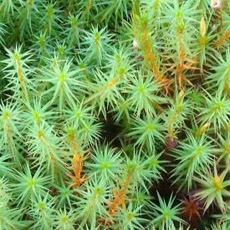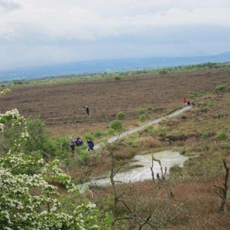Lowland Raised Mires
The lowland raised mires – or peatbogs to give them a more familar name – are the living, breathing heart of the Solway Coast Area of Outstanding Natural Beauty.
They have evolved over thousands of years into a dome of peat covered in pools and plant life. They are rare and important habitats, which is why all of the raised mires on the Solway are designated as Sites of Special Scientific Interest and some are official National Nature Reserves.https://www.gov.uk/government/collections/national-nature-reserves-in-england
The mires are very acidic and low in nutrient, and they are fed via rainwater falling on to their surface.
The dome of peat grows through the action of three species of sphagnum moss. The mosses colonise small pools and fill them. A second species then comes in because it favours slightly drier conditions. This is then followed by a third species that prefers even drier conditions.
As the mosses rise above the level of the dome, new ponds are created and so the process continues. Some of the Solway’s raised mires are over more than three metres above the surrounding surface water level, and some of the peat bogs are almost 10 metres deep.
Many specialist plants such as the carnivorous sundew, which feeds on insects, thrive on the raised mires. In early summer the bogs are covered in a sea of white fluffy cotton grass and the fragrent bog myrtle grows in abbundance. In the drier areas, cross leaved heath heather blankets the ground and brings a beautiful pink and purple hue in August and September.
The mires of the Solway have suffered because of man’s intervention over hundreds of years. From the monks who drained the land so it could be used for farming, to the creators of the Solway Junction Railway who laid train tracks over it, to the peat harvesting for horticultural use, many generations have impacted on this landscape.
But things are being restored through careful water management. Now the mires are coming back to life. To see some of this work in action, head to Wedholme Flow and Glasson Moss.
The lowland raised mires of the Solway are being restored by Cumbria Wildlife Trust, Natural England, RSPB and the Solway Coast Area of Outstanding Natural Beauty Partnership.








